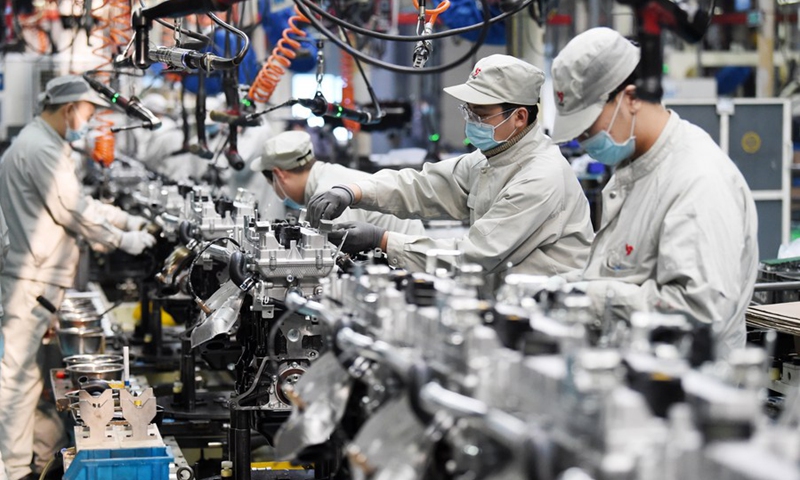GT Voice: China-Vietnam industrial chain defined by close cooperation
By Global Times Published: May 22, 2022 10:51 PM Updated: May 22, 2022 10:44 PM
Photo: Xinhua
Apple Inc told some of its contract manufacturers that it wants to boost production outside China, with Vietnam and India among the countries listed as alternatives to China, The Wall Street Journal reported on Saturday, citing people familiar with the matter.
Since the US tech giant has long been viewed as a weathervane, its latest inclination about supply chain layout may, to a certain extent, offer a glimpse of how rapidly Vietnam's manufacturing position has been rising at a time when China has been facing supply chain problems amid its worst epidemic outbreak in two years.
Given Vietnam's robust economic performance in recent days, some Western public opinion claimed that as China's global supply chain status is facing shocks by the epidemic situation, Southeast Asian countries, represented by Vietnam, will play catch-up or even replace it.
It should be noted that the main reason why Western countries have been touting the rise of Vietnam or other Southeast Asian countries is because they want to use the fast-growing country or region to contain China.
In addition to economic considerations, it is more for the geopolitical purposes that the US and other Western countries have shown growing interests in strengthening economic cooperation with the region.
For instance, during the US-ASEAN summit in Washington in mid-May, the Biden administration appeared keen to lure Vietnam and several other Southeast Asian countries to participate in the Indo-Pacific Economic Framework (IPEF), which senior US officials already said on different occasions is aimed at building supply chains excluding China.
But is "made in China" and "made in Southeast Asia" really a competitive relationship? That's not necessarily the case. Take Vietnam as an example. It is true that the Vietnamese economy has been faring relatively well recently. According to figures from the Vietnamese General Statistics Office, Vietnam's economy expanded by 5.03 percent year-on-year in the first quarter of this year, surpassing China's growth of 4.8 percent. Meanwhile, Vietnam's foreign trade increased 14.4 percent year-on-year in the first three months of 2022, compared with the 10.7 percent growth in China's foreign trade in yuan-denominated terms.
However, this doesn't mean Vietnam's manufacturing competitiveness has threatened China's. From the manufacturing size and strength perspective, Southeast Asian countries including Vietnam are unlikely to replace China's status in the global supply chain in the short term.
Fundamentally speaking, it is based on the spillover effect of the Chinese manufacturing that Vietnam can develop its own manufacturing sector. So the robust development of Vietnam's manufacturing sector is actually a result of its intertwined connection with China in terms of industrial and supply chains. While Vietnam's exports grew 12.9 percent year-on-year to $88.6 billion in the first quarter of this year, its trade surplus was merely $1.46 billion. Meanwhile, Vietnam imported $27.6 billion worth of Chinese goods, resulting in a trade deficit of $14 billion with China during the first quarter.
The Southeast Asian country imports many parts and raw materials from China and exports processes products to the US, Europe and other regions.
If anything, Vietnam's trade structure highlights a paradox in the US-led IPEF initiative for the Asia-Pacific region. If the IPEF can strengthen the economic and trade ties between the US and regional countries by promoting US investment in the region, then the regional manufacturing sector would be more closely linked to China, because all the regional exports to the US would be inextricably linked to China's supply chain.
Vietnam needs to see through industrial chain links behind geopolitical tricks. After all, Vietnam's development doesn't only hinge on how to learn from China's experience, but depends on whether it can find its proper position in the regional industrial chain network to promote Asia's overall trade outlook in the future.

